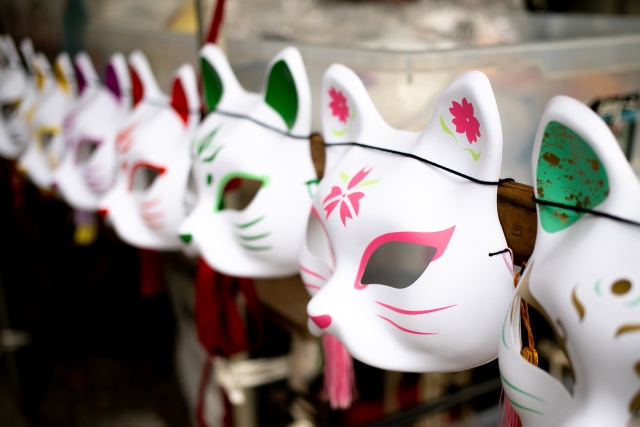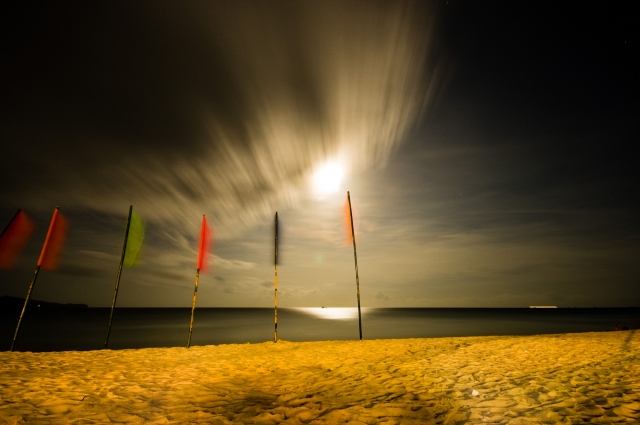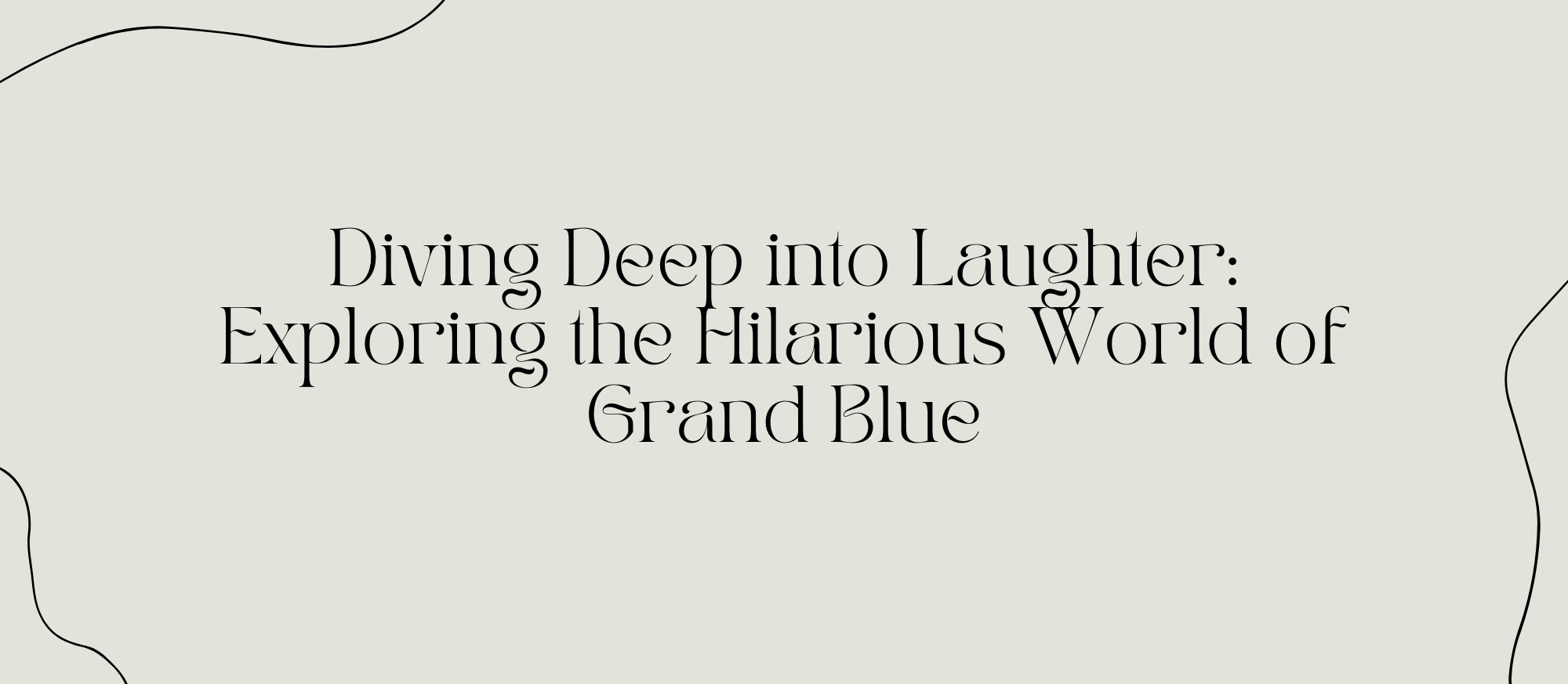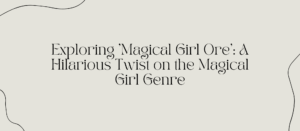Introduction to ‘Grand Blue’

Step into the sun-soaked shores of the Izu Peninsula with “Grand Blue,” a series that brilliantly combines the thrill of diving with uproarious slice-of-life and comedy elements. At the heart of this anime is Iori Kitahara, a college freshman who anticipates an idyllic academic life but instead plunges headfirst into the chaotic world of a diving club known for its wild antics and incessant partying.
Premise and Initial Setup “Grand Blue” opens with Iori moving to the scenic Izu Peninsula to attend Izu University, where he lives above his uncle’s scuba diving shop, Grand Blue. Here, he encounters the eccentric members of the university’s diving club, Peek-a-Boo. Contrary to his expectations of a subdued college life, Iori finds himself swept up in the club’s surreal activities that often leave little room for actual diving. From excessive partying to comedic misunderstandings, Iori’s new life challenges all his prior expectations.
Blend of Genres The genius of “Grand Blue” lies in its unique blend of genres. While it anchors its narrative in the sports of diving, the series thrives on its slice-of-life storytelling style, punctuated by a comedy that borders on the absurd. This combination allows viewers to explore the technical aspects and beauty of diving while simultaneously enjoying the comedic situations that arise from the club members’ wild escapades. The contrast between the tranquility of underwater exploration and the boisterous, often ridiculous life on land creates a dynamic and engaging viewing experience.
Comedic Chaos Each episode builds on the comedic chaos, from Iori’s reluctant participation in ridiculous initiation rituals to his desperate attempts to prove his normalcy to his non-diving peers. The humor in “Grand Blue” is physical and situational, often derived from the characters’ over-the-top reactions and the stark contrast between their diving personas and their party identities. This humor is carefully crafted to appeal not only to fans of comedy but also to those who appreciate a deeper narrative about finding one’s place and the bonds formed through shared experiences.
“Grand Blue” is more than just a series about diving; it’s a journey through the unexpected twists of university life, the bonding over shared interests, and the personal growth that comes from stepping out of one’s comfort zone. With its blend of sports, comedy, and slice-of-life, “Grand Blue” offers a fresh take on the typical sports anime genre, making it a must-watch for anyone looking for laughter and a bit of adventure in their anime viewing.
Character Analysis

“Grand Blue” thrives on its vibrant cast of characters, each bringing a unique flair to the series’ mix of diving, comedy, and slice-of-life drama. Let’s dive into the lives of Iori Kitahara, Chisa Kotegawa, and the eclectic members of the Peek-a-Boo diving club, exploring how their individual traits and interactions contribute to the series’ charm and hilarity.
Iori Kitahara: The Reluctant Diver Iori Kitahara begins his university life with dreams of a perfect college experience but quickly finds himself in over his head. His initial reluctance to join the diving club’s shenanigans is soon overshadowed by his adaptability and eventual embrace of the club’s wild lifestyle. Iori’s journey from an ordinary student to a central figure in the club’s escapades forms the backbone of the series. His reactions to the absurd situations he finds himself in not only provide comic relief but also allow for moments of self-discovery and character growth.
Chisa Kotegawa: The Serious Diver Contrasting sharply with Iori is Chisa Kotegawa, his cousin, who is serious about diving and often plays the straight man to the club’s antics. Her passion for the ocean and diving is palpable, and she serves as a bridge between the comedic elements of the club’s activities and the beautiful, serene world of diving. Chisa’s relationship with Iori is complex; while she is often exasperated by his antics, she also shows signs of caring deeply about his well-being, adding a layer of depth to her character.
The Peek-a-Boo Diving Club The Peek-a-Boo club members are a diverse group whose varying personalities and backgrounds contribute to the dynamic interplay of relationships within the series. From the mischievous Tokita and Kotobuki, who are always at the forefront of the club’s wildest plans, to the more grounded Nanaka and Azusa, who provide stability and sense when things get too chaotic, each member adds a unique flavor to the story. The club’s dynamics are a critical element of the show, driving both the comedy and the moments of tension that lead to character development.
Fueling Comedy and Drama The interactions among the Peek-a-Boo members are the primary source of the series’ comedy and drama. Their relationships are built on a foundation of shared experiences, both through diving and their uproarious social activities. This mix of professional diving and recreational antics allows for a variety of comedic situations that highlight the characters’ flaws and strengths. Additionally, the drama that unfolds from their interactions often leads to moments of introspection and personal growth, particularly for Iori and Chisa, as they navigate their complex feelings about each other and their futures.
In conclusion, “Grand Blue” offers a compelling look at how individual characters and their relationships can drive a narrative forward. Through its detailed character analysis, the series not only delivers laugh-out-loud moments but also touches on deeper themes of friendship, ambition, and the search for identity. The diverse cast and their dynamics make “Grand Blue” a standout anime that captures the essence of youth and the bittersweet trials of college life.
Themes and Humor

“Grand Blue” is not just an anime about diving; it’s a vivid exploration of friendship, youth, and the relentless pursuit of adventure, all wrapped up in layers of uproarious humor that enhance its storytelling. This combination of themes and comedic elements creates a refreshing narrative that resonates deeply with a wide audience.
Central Themes of ‘Grand Blue’ At its core, “Grand Blue” celebrates the spirited adventures of youth through the lens of Iori Kitahara and his fellow diving club members. The series expertly captures the essence of college life—a time brimming with freedom, new experiences, and the forging of lifelong friendships. Each episode delves into these themes by showcasing the characters’ spontaneous road trips, diving excursions, and the everyday hilarity of their interactions, reflecting the unpredictability and joy of their youthful days.
The theme of friendship is particularly prominent, depicted through the close-knit relationships within the Peek-a-Boo diving club. These relationships are the heartbeat of the series, showcasing a group of friends who might not always see eye to eye but ultimately support one another in their quirks and endeavors. The genuine portrayal of these dynamics offers viewers a slice of life that many can relate to, enhancing the series’ appeal and emotional depth.
Humor as a Storytelling Device Humor in “Grand Blue” is crafted through a clever mix of visual gags, situational comedy, and character-driven jokes. The series excels in its ability to turn ordinary situations into sequences of laugh-out-loud antics, particularly through the diving club’s often misguided adventures. Whether it’s Iori’s initial reluctance to embrace the club’s wild nature or the group’s comedic misunderstandings during dive training, humor is used not just for entertainment but as a tool to further character development and plot progression.
The humor also serves to highlight and sometimes critique various aspects of college life, from the pressure to fit in to the often exaggerated focus on social activities. By amplifying these elements through comedy, “Grand Blue” invites its audience to laugh at the absurdities of life while also reflecting on their own experiences of youth and camaraderie.
Enhancing Narrative Through Comedy The comedic elements of “Grand Blue” do more than just provide relief; they enhance the narrative by deepening the viewer’s engagement with the characters and their growth. As the series progresses, the humor evolves in complexity, paralleling the characters’ own development and the strengthening of their bonds. This alignment of comedy with character arcs and thematic exploration not only entertains but also enriches the storytelling, making “Grand Blue” a standout anime that effectively uses humor to communicate deeper messages about life and friendship.
In conclusion, “Grand Blue” is a masterful blend of humor and heartfelt storytelling, where the joys and trials of youth are brought to life through vibrant characters and their comedic escapades. The series not only offers a compelling look at the themes of friendship and adventure but does so in a way that is both hilarious and touching, securing its place as a beloved addition to the slice-of-life genre.
Plot Highlights and Key Episodes

“Grand Blue” captivates its audience with a delightful series of plot twists and character revelations that make each episode a critical piece of the overall narrative. This overview highlights key episodes and plot developments that are essential for understanding the series’ progression and the substantial growth of its characters. Additionally, it identifies standout moments that perfectly illustrate the anime’s unique combination of humor and heart.
Key Episodes and Plot Developments One of the pivotal episodes early in the series is where Iori Kitahara first joins the Peek-a-Boo diving club. Initially convinced to stay away from the club’s notorious antics, Iori quickly becomes entangled in their world, setting the tone for his unexpected college life. This episode is crucial for introducing the primary cast and setting up the comedic dynamics that define the series.
Mid-season episodes deepen the exploration of diving as more than just a backdrop for comedy. These episodes focus on the characters’ training and preparation for a diving competition, blending personal challenges with humorous mishaps. This period in the series is vital for showing character development, particularly Iori’s growing passion for diving and how it begins to change his perceptions and relationships.
A key episode that encapsulates the blend of humor and emotional depth is the festival night, where characters confront their feelings amid the chaos of festivities. This episode is a turning point that reveals deeper insights into the characters’ motivations and vulnerabilities, providing a rich narrative experience that goes beyond simple comedic sketches.
Standout Moments One of the standout moments in “Grand Blue” is the series of miscommunications that occur during a group trip, which not only provide humor through classic slapstick and verbal jokes but also subtly advance the characters’ relationships and self-awareness. These scenes highlight the series’ ability to use comedy to expose the depth of its characters’ personalities and bonds.
Another significant moment is the poignant episode where Iori and Chisa overcome a misunderstanding that threatens to disrupt their friendship. This episode, while infused with the show’s characteristic humor, also delicately handles themes of trust and reconciliation, showcasing “Grand Blue’s” capacity to weave emotional depth into its lighthearted narrative.
Conclusion “Grand Blue” excels in using its episodic structure to both entertain and develop its story and characters. Each key episode builds upon the last, crafting a coherent and engaging narrative that captivates viewers with its humorous yet heartfelt depiction of life and diving. The series stands out not just for its comedic elements but for how it effectively uses these moments to deepen the viewer’s investment in the characters and their journeys. This blend of humor and heart is what makes “Grand Blue” a truly memorable anime experience.
Impact and Reception

“Grand Blue” has rapidly established itself as a fan-favorite anime, both in Japan and internationally, renowned for its unique blend of sports, comedy, and slice-of-life elements. This review explores the series’ reception and its significant impact on the anime genre, particularly its fresh take on the sports comedy narrative through the lens of diving.
Reception by Fans and Critics “Grand Blue” has been well-received for its engaging storytelling and rich character development, with fans praising its ability to seamlessly blend uproarious comedy with genuinely touching moments. The anime’s portrayal of college life and diving culture has resonated with a wide audience, drawing in viewers who seek both entertainment and emotional depth in their anime experiences. Critics, too, have noted “Grand Blue” for its sharp wit and the quality of its animation, which beautifully captures the allure of the ocean and the excitement of diving.
Internationally, “Grand Blue” has garnered a dedicated following, appreciated for its humor and the relatability of its characters’ adventures and misadventures. The series has been particularly lauded for its realistic depiction of group dynamics and friendships, making it a standout among slice-of-life and sports animes.
Contribution to the Anime Genre “Grand Blue” stands out in the anime landscape for its innovative approach to the sports genre, integrating the technical and aesthetic aspects of diving into its storyline. Unlike traditional sports anime that primarily focus on competition and personal achievement, “Grand Blue” uses diving as a backdrop to explore broader themes such as friendship, love, and the pursuit of happiness. This approach has refreshed the sports anime genre, offering a new perspective on how sports can influence and reflect characters’ lives beyond mere competition.
Moreover, “Grand Blue” has contributed significantly to the sports comedy genre by highlighting the comedic potential of sporting activities when intertwined with everyday college experiences. Its success has shown that sports anime can be both humorous and heartfelt, expanding the genre’s appeal to include viewers who might not typically enjoy sports-centric stories.
Impact on the Sports Comedy Genre The impact of “Grand Blue” on the sports comedy genre is evident in its ability to engage audiences with its authentic portrayal of diving while delivering consistent comedy. The series has set a high standard for how sports can serve as a conduit for comedy, character growth, and social commentary. By doing so, “Grand Blue” has inspired other anime creators to explore new ways of incorporating sports into diverse narratives, potentially leading to more innovative and varied representations of sports in anime.
In conclusion, “Grand Blue” is more than just a comedy or a sports anime; it is a culturally impactful series that has resonated with audiences worldwide for its authentic portrayal of life’s trials and tribulations through the lens of diving. Its success has not only enriched the sports comedy genre but also set new benchmarks for storytelling within the anime community.








